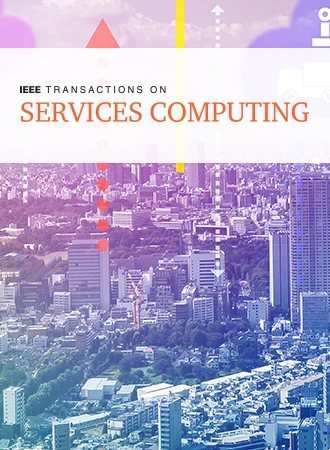BackFillMe: An Energy and Performance Efficient Virtual Machine Scheduler for IaaS Datacenters
IF 5.5
2区 计算机科学
Q1 COMPUTER SCIENCE, INFORMATION SYSTEMS
引用次数: 0
Abstract
Backfilling refers to the practice of allowing small jobs to be completed ahead of schedule as long as they do not cause the first job in the line to wait. Users are expected to offer estimates of how long jobs will take to complete in order to make these decisions possible, and these projections are often based on historical data. However, predictions are very hard and may not be accurate, particularly in cloud computing scenarios where jobs or applications run on Virtual Machines (VMs). In addition, scheduling and consolidation techniques can improve the energy efficiency and performance of applications. Consolidation involves VM migrations that can have a negative impact on workload performance and users’ costs. Backfilling can be used as an alternative technique for consolidation (short-term) and/or can be used along with consolidation (long-term). Backfilling methods are well-utilised in single computing systems, but are relatively unexplored in cloud resource allocation. A backfilling-based resource allocation and consolidation technique is proposed. Using real workloads from the Google cluster traces, we investigate the impact of backfilling on infrastructure energy efficiency and performance. For 12583 heterogeneous servers and approximately three million jobs that belong to three different applications, we observed that approximately 19% energy savings and 6% workload performance improvements are achievable using the backfilling approach. Furthermore, our evaluation suggests that using VM runtime as a criterion for the backfilling approach is approximately 3.56%–7.78% more energy and 1.91%–3.38% more performance efficient than using priority as a backfilling criterion.BackFillMe:用于IaaS数据中心的能源和性能高效的虚拟机调度程序
回填指的是允许小作业提前完成的做法,只要它们不导致队列中的第一个作业等待。为了使这些决策成为可能,用户需要提供完成作业所需时间的估计,而这些预测通常基于历史数据。然而,预测非常困难,而且可能不准确,特别是在作业或应用程序在虚拟机(vm)上运行的云计算场景中。此外,调度和整合技术可以提高应用程序的能源效率和性能。整合涉及VM迁移,这会对工作负载性能和用户成本产生负面影响。回填可以作为加固(短期)的替代技术和/或可以与加固(长期)一起使用。回填方法在单一计算系统中得到了很好的应用,但在云资源分配中却相对未被探索。提出了一种基于充填的资源分配与固结技术。使用谷歌集群跟踪的真实工作负载,我们研究了回填对基础设施能源效率和性能的影响。对于属于三个不同应用程序的12583个异构服务器和大约300万个作业,我们观察到使用回填方法可以节省大约19%的能源和提高6%的工作负载性能。此外,我们的评估表明,使用VM运行时间作为回填方法的标准比使用优先级作为回填标准大约多3.56%-7.78%的能量和1.91%-3.38%的性能效率。
本文章由计算机程序翻译,如有差异,请以英文原文为准。
求助全文
约1分钟内获得全文
求助全文
来源期刊

IEEE Transactions on Services Computing
COMPUTER SCIENCE, INFORMATION SYSTEMS-COMPUTER SCIENCE, SOFTWARE ENGINEERING
CiteScore
11.50
自引率
6.20%
发文量
278
审稿时长
>12 weeks
期刊介绍:
IEEE Transactions on Services Computing encompasses the computing and software aspects of the science and technology of services innovation research and development. It places emphasis on algorithmic, mathematical, statistical, and computational methods central to services computing. Topics covered include Service Oriented Architecture, Web Services, Business Process Integration, Solution Performance Management, and Services Operations and Management. The transactions address mathematical foundations, security, privacy, agreement, contract, discovery, negotiation, collaboration, and quality of service for web services. It also covers areas like composite web service creation, business and scientific applications, standards, utility models, business process modeling, integration, collaboration, and more in the realm of Services Computing.
 求助内容:
求助内容: 应助结果提醒方式:
应助结果提醒方式:


